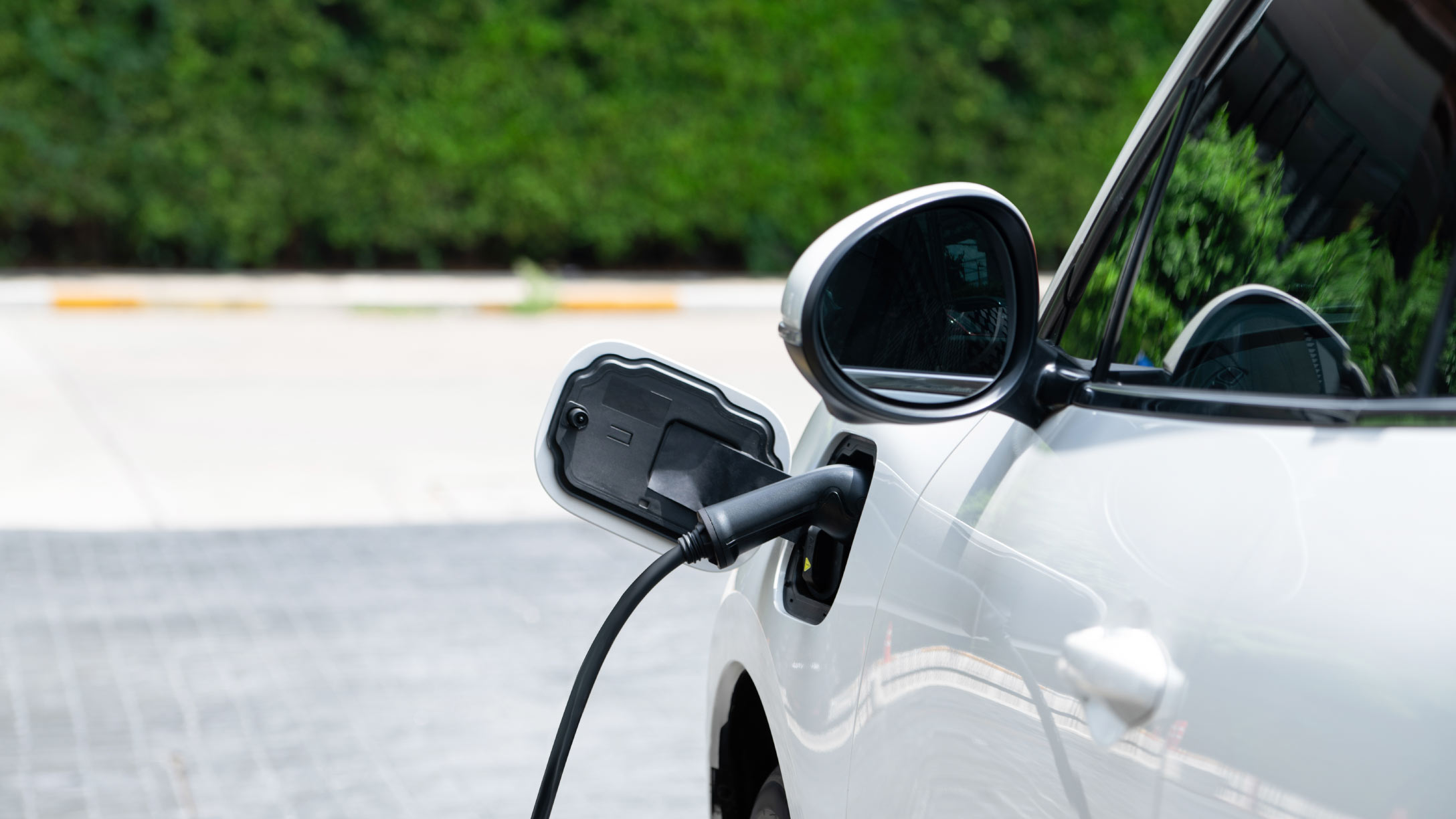Electrify your fleet: An FAQ for fleet managers
Find answers to your questions about adding electric vehicles to your fleet.


Adding electric vehicles (EVs) to a fleet comes with a unique set of challenges for each business. These days, there are a lot of important questions to ask when determining the best path forward on your fleet electrification journey. To help you prepare, we sat down with Geotab’s VP of Sustainable Fleet Solutions, Eric Mallia, for an interview to discuss the most commonly asked questions about fleet electrification.
GEOTAB: We are seeing an increasing number of fleet operators commit to EVs as part of their corporate strategy to reduce costs and emissions. When should fleet managers consider purchasing EVs for their fleet?
ERIC MALLIA: The sooner fleets begin investigating electric vehicles, the better since the transition will require some extra planning. The transition will most likely be gradual, a few vehicles at a time, as your old vehicles come to the end of their service life.
Also EVs can present significant financial benefits because they often have a lower total cost of ownership (TCO), resulting from lower fuel and maintenance costs. Ultimately, the decision to purchase EVs for a fleet should be based on a careful analysis of the fleet's needs and the available options. With more electric makes and models entering the market, the TCO savings and many incentives available, there has never been a better time to start considering EVs.
GEOTAB: Range anxiety continues to be one of the top barriers to EV adoption, particularly with fleet vehicles that are required to travel long distances and operate for extended periods of time. Are there EVs that have enough range for fleet applications?
ERIC MALLIA: Electric vehicles have improved a lot over the last few years, specifically in terms of range. While the suitability of EVs depends on your fleet’s application, there are many options available. Most BEVs have a rated range of at least 250 miles and as a result, they will be able to fit the bill for many light-duty commercial and passenger fleets.
A more nuanced view is needed when talking about the medium- and heavy-duty sectors because some vehicle classes are farther along than others. Electric buses, as well as regional haul and yard trucks, are well on their way, while other industries are just beginning.
I want to point out that an EV’s usable range can be affected by several factors, including temperature, payload and speed, so it’s important to choose the right vehicle for the job and conditions at hand.
GEOTAB: You mentioned that despite the strides we’ve made in technology, not all vehicles are suitable for electrification. How do I decide which fleet vehicles make the most financial sense to replace with an EV?
ERIC MALLIA: You need to consider your daily driving distances, carrying capacity and dwell times to determine if available models can do the job with the available range. Then, you can use that information to identify if there are any potential financial savings. EV’s typically have a lower TCO because fuel and maintenance costs are much lower. In the right circumstances, these savings can counter the higher acquisition cost of an EV, making them cheaper over an internal combustion engine (ICE) vehicle in the long run.
As a general rule, the first vehicles to consider are those with predictable routes that can be completed without charging but are driven enough annually to generate fuel cost savings.
It’s important for fleet managers to make their decisions based on data and not assumptions. Quality data can help you determine if an EV is right for its intended application, for example.
GEOTAB: With so many EV models available and coming to market, choosing the right model for the right application can get overwhelming. How do I decide between battery electric vehicles (BEVs) and plug-in hybrid electric vehicles (PHEVs)?
ERIC MALLIA: Your fleet application will determine whether BEVs or PHEVs are right for you.
The more eco-friendly option are BEVs, which are fully electric and have no tailpipe emissions. BEVs also present the most cost-saving opportunities from fuel and reduced maintenance needs, specifically if they can meet daily driving requirements on a single charge or have long enough dwell times to charge between duty cycles.
A PHEV might be a better fit when you have longer or less predictable routes, allowing you to run on both gas and a (smaller) electric battery with a lower range. As a result, their carbon footprint will depend on how much of the driving is done with electricity vs. gas.
GEOTAB: At the moment, the provision of charging infrastructure is an obstacle for many fleet operators considering a move to EVs. How do I decide how many chargers I need?
ERIC MALLIA: Charging can certainly be one of the more daunting tasks in your EV adoption strategy, but it doesn’t need to be. Your approach will depend on a few things, including your vehicle dwell time, the type of chargers you use and where they are located – all information that can be surfaced through telematics data.
Some fleet managers may think they need a dedicated charger for each EV. Depending on how long your EVs dwell, you may be able to create a schedule so that multiple vehicles can use the same charger. You can monitor an EV’s state-of-charge and set up custom notifications to ensure they always have a sufficient charge before deployment.
GEOTAB: No two businesses operate the same way when it comes to their fleet, which means there’s not a single clear-cut answer to solve everyone’s unique EV transition requirements. That being said, in general, how long does it take to adopt EVs into a fleet?
ERIC MALLIA: You’re right; every fleet is unique, so the timelines will vary. As the EV transition requires thoughtful planning, it comes back to creating an EV adoption strategy, as mentioned.
While some fleets might try piloting a few vehicles as existing ones need to be replaced, other fleets may swap out a large portion of the fleet in a full-scale electrification program.
No matter the scenario, consider an important question: Where are your EVs going to charge? This is important because it will add time to your implementation. You should also contact your municipal government and electric utility provider as soon as possible if you are installing a depot of charging equipment to secure the necessary permits.
GEOTAB: Once I have a few EVs in my fleet, how do I know if they’re performing better than my ICE vehicles?
ERIC MALLIA: For every metric you would use to measure the performance of the ICE vehicles in your fleet, there will be an equivalent one for EVs.
One of the key metrics to compare is fuel vs. energy efficiency. To determine fuel efficiency, you would traditionally compare driving distance to the amount of fuel used to create a miles per gallon (MPG) metric. For EVs, you would compare driving distance to the amount of electricity used. This can be measured in watt-hours per mile (Wh/mile).
The simplest way to compare the EVs to the ICE vehicles in your fleet is to manage them both in a single fleet management platform. This way, you know that the data is based on the same definitions and you can run a consolidated report for all the vehicles in your fleet. This allows you to measure their fuel consumption and operating costs directly.
GEOTAB: Thank you for your insights. Is there anything else you would like to add?
ERIC MALLIA: No matter where you’re at in your electrification journey, Geotab has a ton of resources that can help you accelerate your EV knowledge – from the fundamentals of EVs to creating an adoption strategy through to operating EVs efficiently. As a starting point, download our ebook "The complete fleet electrification roadmap" from the Fleet Electrification Knowledge Center, to learn everything you need to begin integrating EVs into your fleet.
For more in-depth answers to some of the questions we covered here or for additional insights on how data can improve your sustainable fleet journey, watch my conversation with Charged Fleet.
Subscribe to get industry tips and insights
Subscribe to get industry tips and insights
Related posts

Beat the Heat: Easy Ways to Maximize Your EV Range This Summer
June 19, 2025
2 minute read

Small Steps, Big Impact: The Transformative Power of AI in Field Service
June 11, 2025
2 minute read

Charlotte Argue: Breaking down cost barriers for electric fleets
June 5, 2025
4 minute read
.jpg)
Harnessing AI to Drive Innovation, Responsibility, and Human Potential at Scale
May 23, 2025
2 minute read

